Abstract
Temporal lobe epileptics undergoing psychiatric hospitalisation were contrasted with patients suffering idiopathic psychiatric syndromes or other epilepsies. Quantitative ratings from blind interviews conducted according to a protocol confirmed the appearance of a statistically distinctive behavioural profile, including the desire for social affiliation, circumstantiality, religious and philosophic interests, and deepened affects, among the temporal lobe epileptics.
Full text
PDF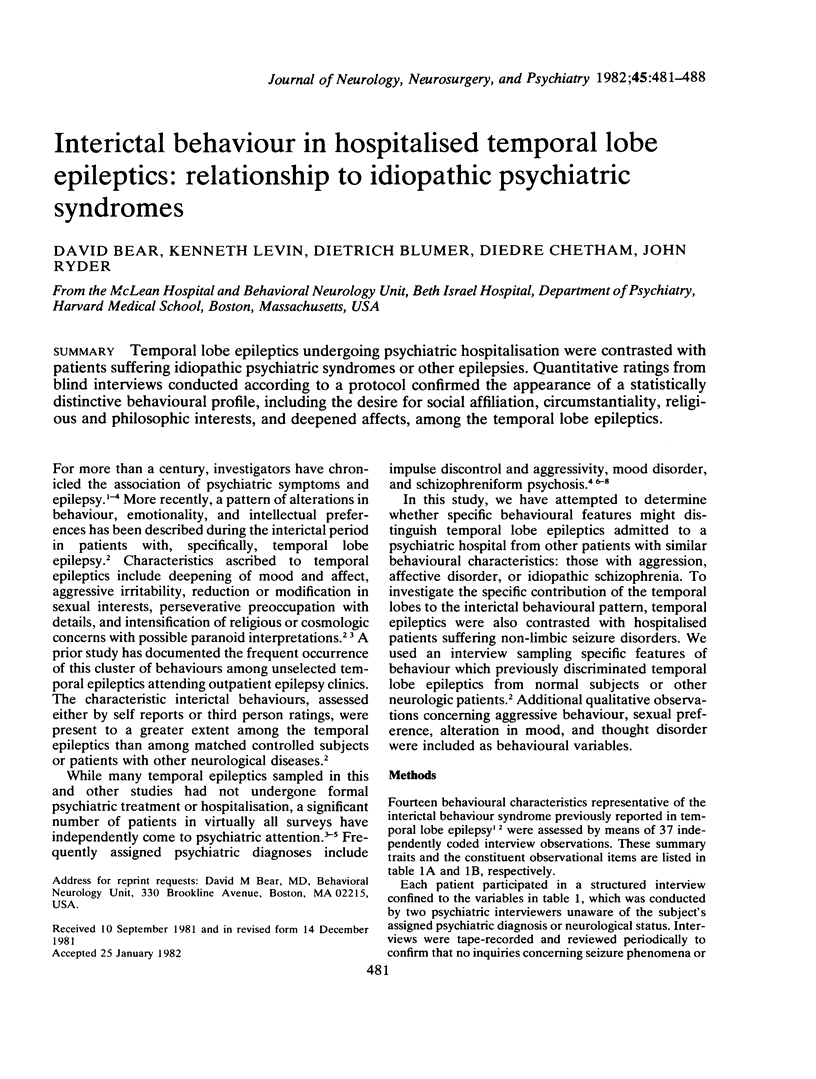

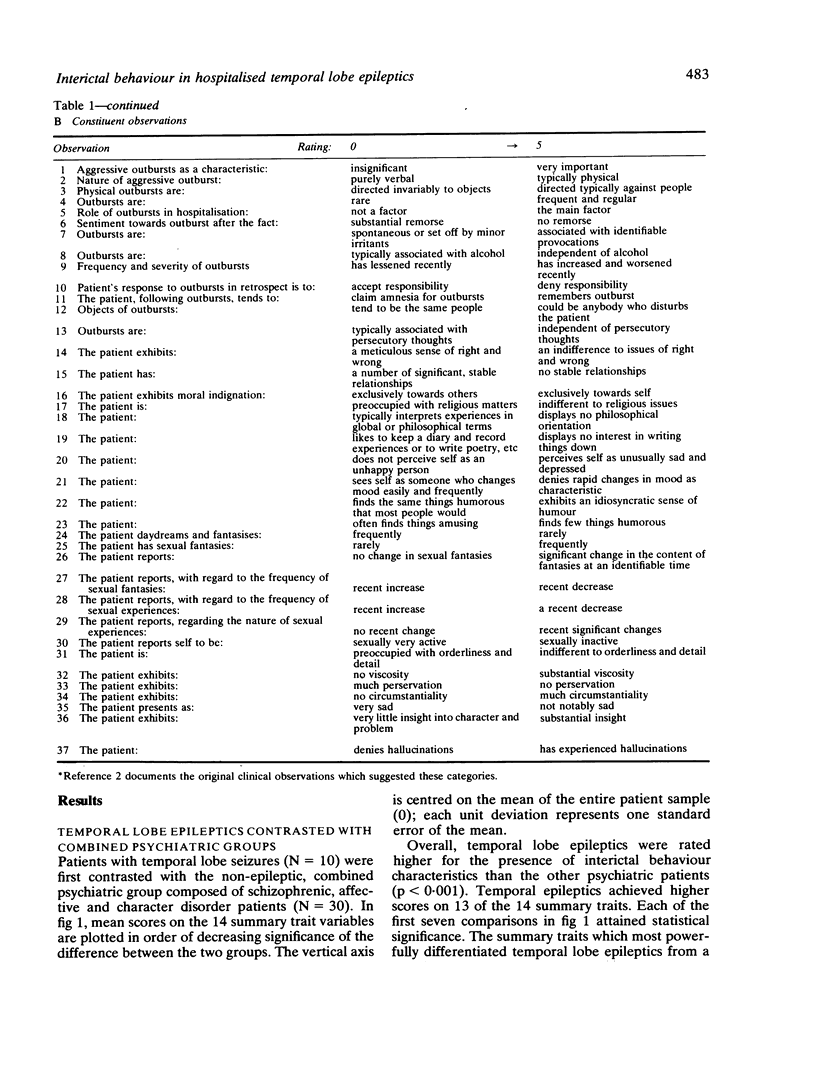
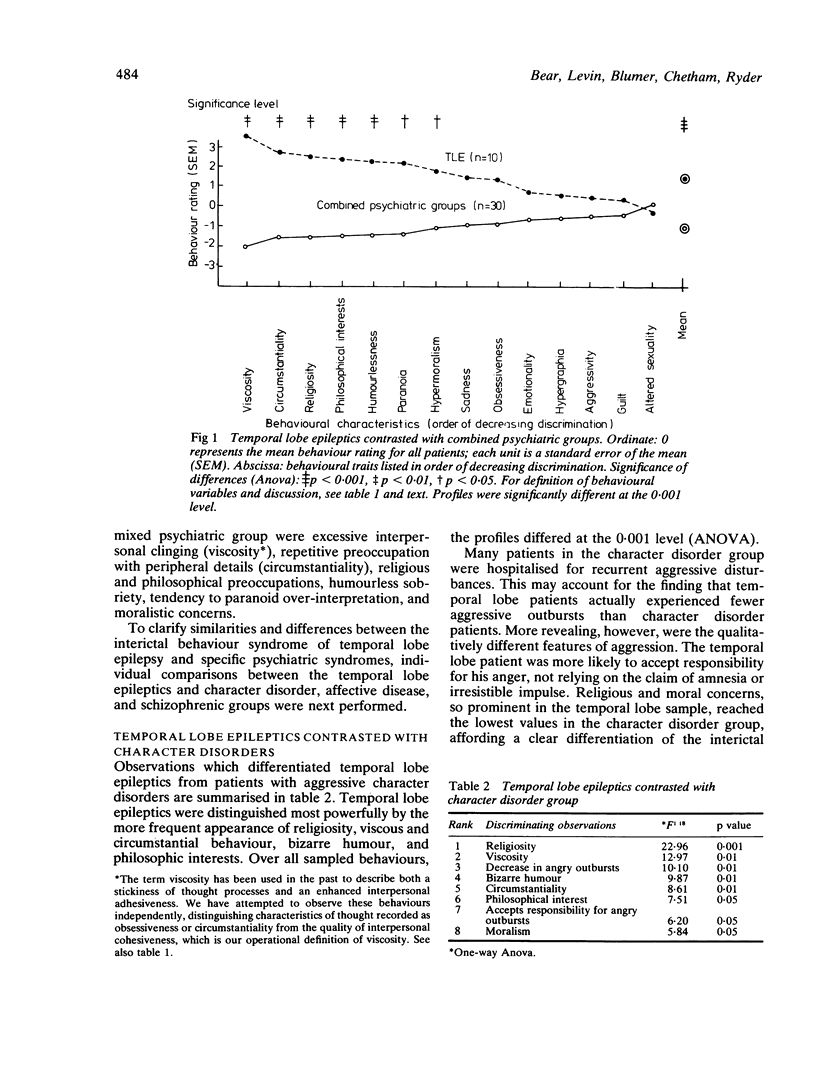
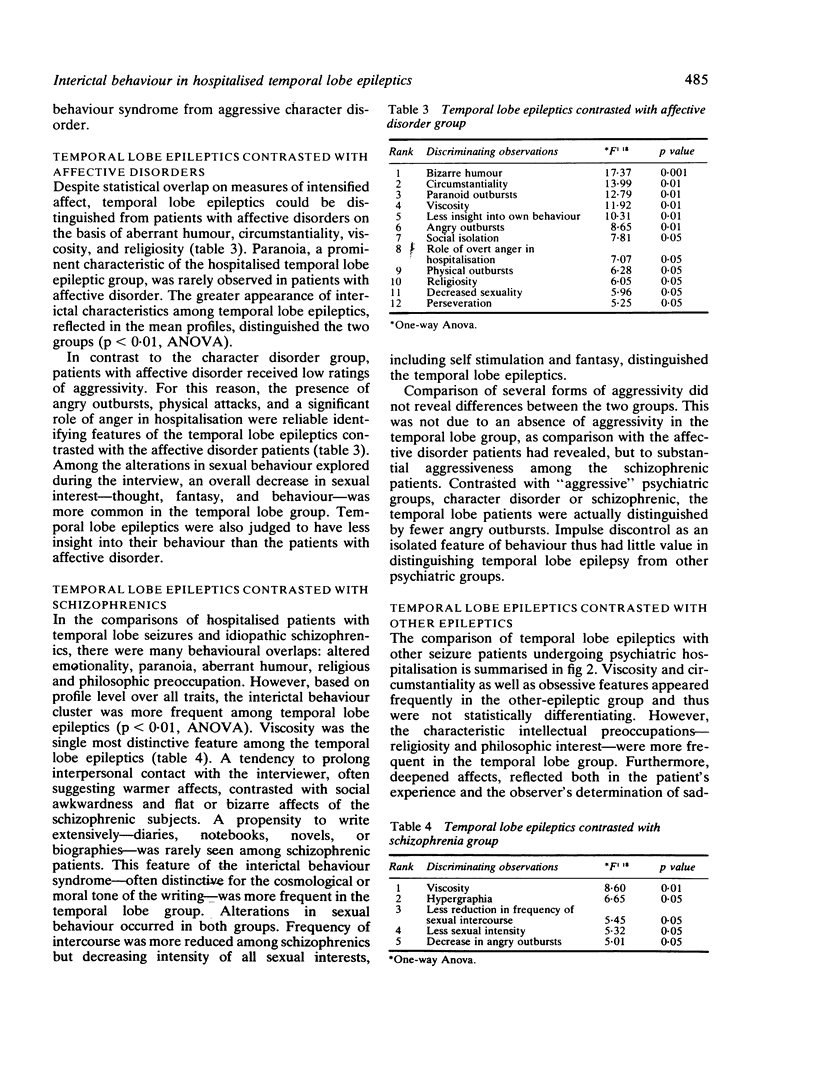
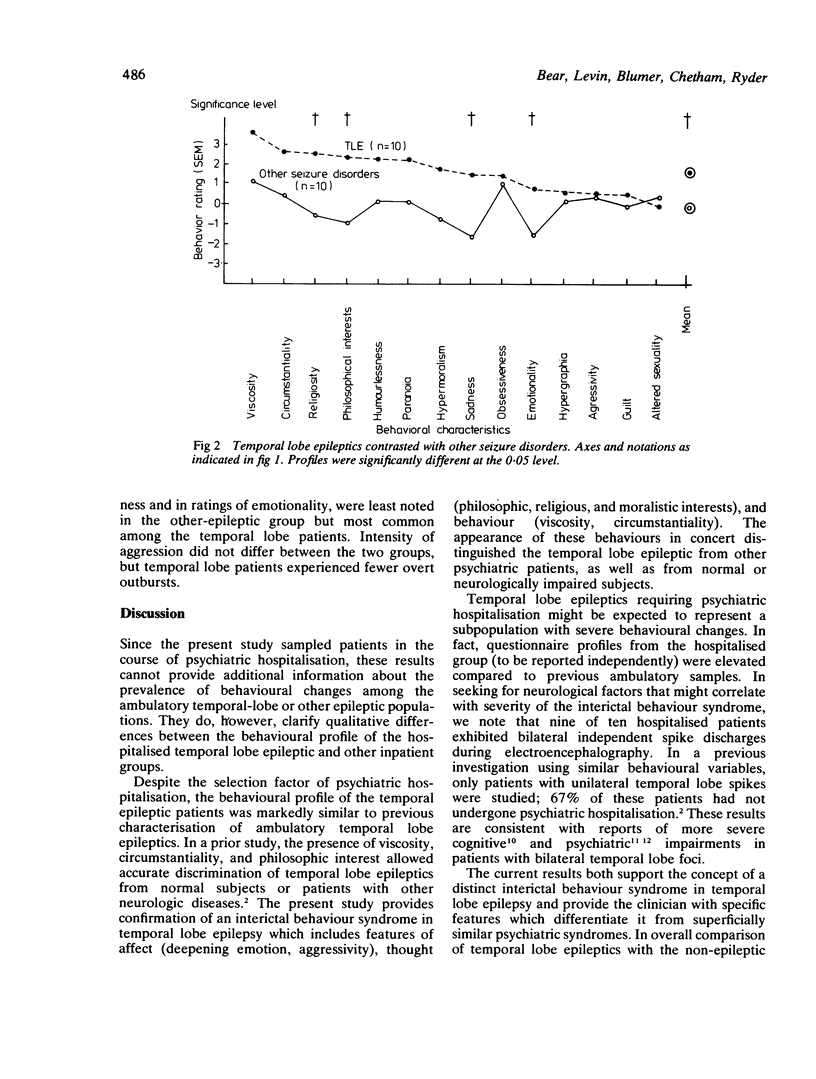
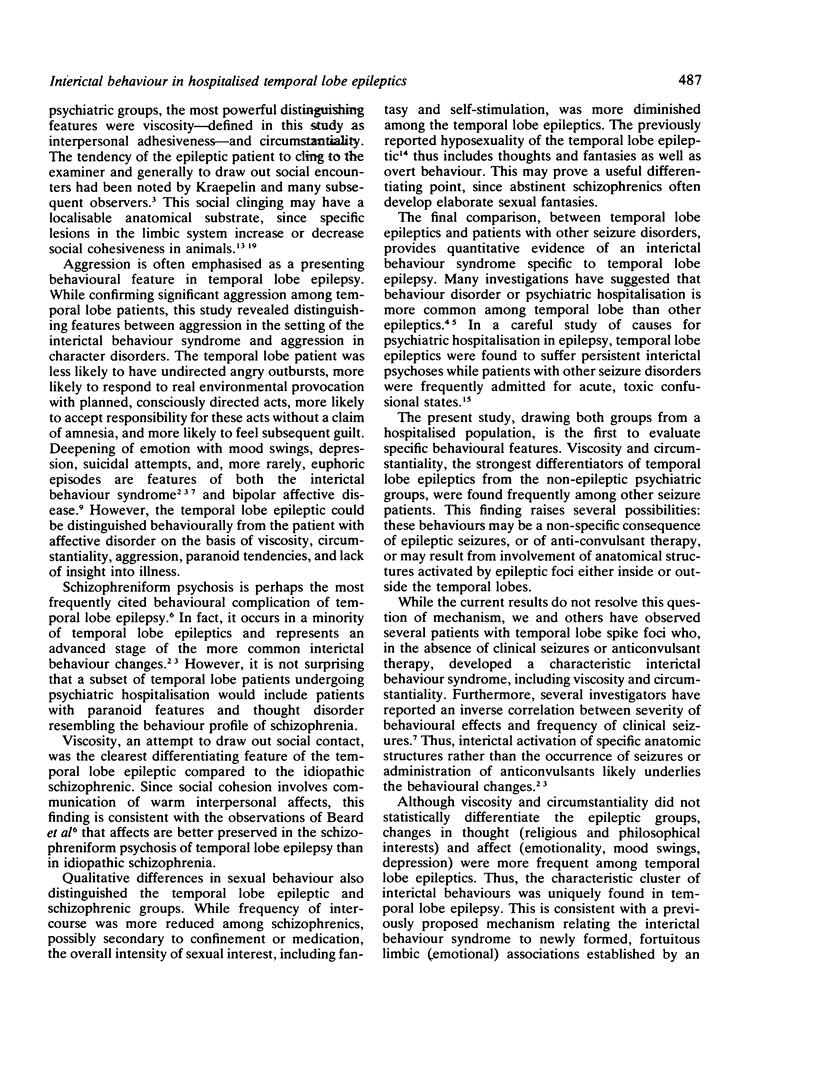
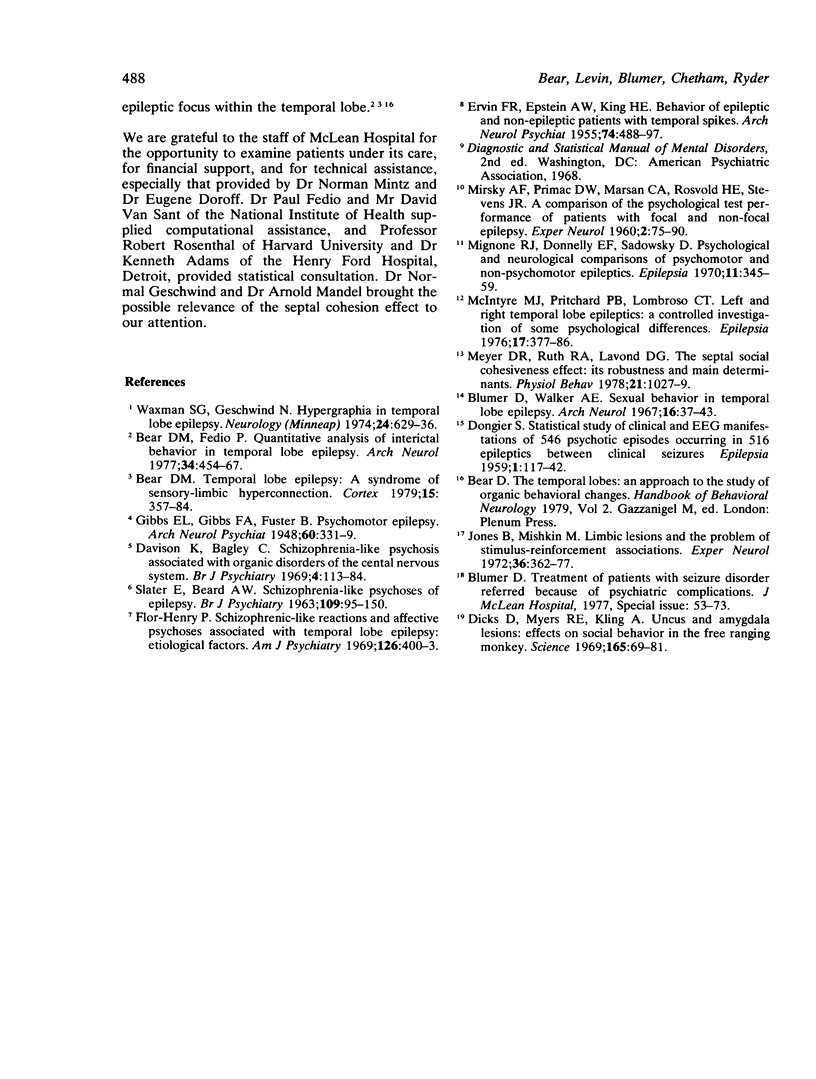
Selected References
These references are in PubMed. This may not be the complete list of references from this article.
- Bear D. M., Fedio P. Quantitative analysis of interictal behavior in temporal lobe epilepsy. Arch Neurol. 1977 Aug;34(8):454–467. doi: 10.1001/archneur.1977.00500200014003. [DOI] [PubMed] [Google Scholar]
- Bear D. M. Temporal lobe epilepsy--a syndrome of sensory-limbic hyperconnection. Cortex. 1979 Sep;15(3):357–384. doi: 10.1016/s0010-9452(79)80064-7. [DOI] [PubMed] [Google Scholar]
- Blumer D., Walker A. E. Sexual behavior in temporal lobe epilepsy. A study of the effects of temporal lobectomy on sexual behavior. Arch Neurol. 1967 Jan;16(1):37–43. doi: 10.1001/archneur.1967.00470190041005. [DOI] [PubMed] [Google Scholar]
- Dicks D., Myers R. E., Kling A. Uncus and amygdala lesions: effects on social behavior in the free-ranging rhesus monkey. Science. 1968 Jul 4;165(3888):69–71. [PubMed] [Google Scholar]
- ERVIN F., EPSTEIN A. W., KING H. E. Behavior of epileptic and nonepileptic patients with temporal spikes. AMA Arch Neurol Psychiatry. 1955 Nov;74(5):488–497. doi: 10.1001/archneurpsyc.1955.02330170022004. [DOI] [PubMed] [Google Scholar]
- Flor-Henry P. Schizophrenic-like reactions and affective psychoses associated with temporal lobe epilepsy: etiological factors. Am J Psychiatry. 1969 Sep;126(3):400–404. doi: 10.1176/ajp.126.3.400. [DOI] [PubMed] [Google Scholar]
- Jones B., Mishkin M. Limbic lesions and the problem of stimulus--reinforcement associations. Exp Neurol. 1972 Aug;36(2):362–377. doi: 10.1016/0014-4886(72)90030-1. [DOI] [PubMed] [Google Scholar]
- McIntyre M., Pritchard P. B., 3rd, Lombroso C. T. Left and right temporal lobe epileptics: a controlled investigation of some psychological differences. Epilepsia. 1976 Dec;17(4):377–386. doi: 10.1111/j.1528-1157.1976.tb04449.x. [DOI] [PubMed] [Google Scholar]
- Meyer D. R., Ruth R. A., Lavond D. G. The septal social cohesiveness effect: its robustness and main determinants. Physiol Behav. 1978 Dec;21(6):1027–1029. doi: 10.1016/0031-9384(78)90181-6. [DOI] [PubMed] [Google Scholar]
- Mignone R. J., Donnelly E. F., Sadowsky D. Psychological and neurological comparisons of psychomotor and non-psychomotor epileptic patients. Epilepsia. 1970 Dec;11(4):345–359. doi: 10.1111/j.1528-1157.1970.tb03902.x. [DOI] [PubMed] [Google Scholar]
- SLATER E., BEARD A. W., GLITHERO E. The schizophrenialike psychoses of epilepsy. Br J Psychiatry. 1963 Jan;109:95–150. doi: 10.1192/bjp.109.458.95. [DOI] [PubMed] [Google Scholar]
- Waxman S. G., Geschwind N. Hypergraphia in temporal lobe epilepsy. Neurology. 1974 Jul;24(7):629–636. doi: 10.1212/wnl.24.7.629. [DOI] [PubMed] [Google Scholar]


